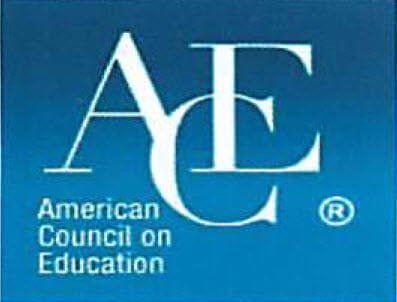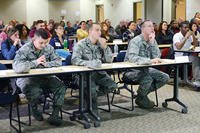Finding the Higher Education Pathways to Success for Military and Veteran Students
As the discussion surrounding veterans’ education continues, Americans are looking to institutions of higher education to help make good on our country’s promise of a high-quality education for members of the armed forces. Colleges and universities, in turn, are striving to provide the academic programs and support needed to ensure that our nation’s veterans succeed, with each institution taking different pathways to fulfill a common goal of ramping up services for military and veteran students.
Recently, the American Council on Education (ACE), the major coordinating body for all the nation’s higher education institutions, released a report, From Soldier to Student II: Assessing Campus Programs for Veterans and Service Members. The report updates a 2009 study which provided the first national snapshot of the programs and services colleges and universities had in place to serve veterans and military personnel following passage of the Post-9/11 GI Bill in 2008.
The report paints an encouraging picture of the actions of today’s colleges and universities, demonstrating a marked increase in policies and services supporting the military community at institutions of higher education across the country. Sixty-two percent of the 690 responding institutions indicated they currently provide specific programs and services for service members and veterans, up from 57 percent in 2009. Seventy-one percent indicated that providing these services is part of a long-term strategic plan, compared to 57 percent in 2009.
It should also be noted that, despite the challenging economic environment, public institutions still ramped up programs specifically designed for veterans, making it clear that this type of support is a high priority.
However, the report acknowledges there is still work to be done in these areas. Respondents all indicated they will continue considering veteran-friendly changes to their institutions over the next five years. A particular priority is providing training and professional development for staff, faculty and mental health counselors to ensure a healthy campus climate and provide expert transition support for veterans outside of academic needs. Institutions continue to seek guidance on how to create and provide this type of training, as well as how to develop additional programs and services for their student veterans.
At the same time, institutions are seeking answers to the question: what is the definition of veteran-friendly?
It is important to recognize that the diverse nature of both American colleges and universities and today’s military plays a role in answering that question. Programs and services that support student veterans can succeed only if they are built with each institution’s unique student population, campus culture and academic environment in mind. There is no one-size-fits-all solution for meeting the higher education needs of military and veteran students.
ACE has, since 1918, stood ready to support both institutions and their military students, ensuring those who have served receive the highest quality education and academic experience possible. The entire higher education community is eager to serve the military and veteran community. Much progress has been made in a few short years and the focus many institutions are placing on making these initiatives part of their long term strategic plan bodes well for future gains.
To learn more about ACE’s programs and services, visit their website.
Meg Mitcham is director of veterans’ programs at the American Council on Education, the major coordinating body for all the nation’s higher education institutions.





